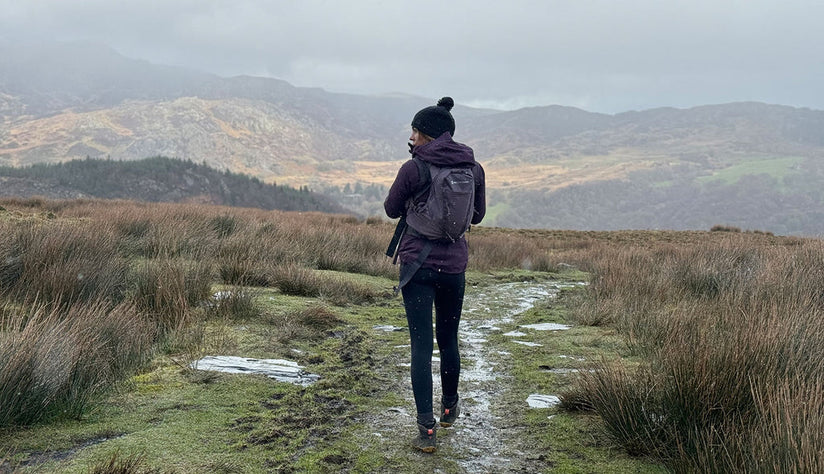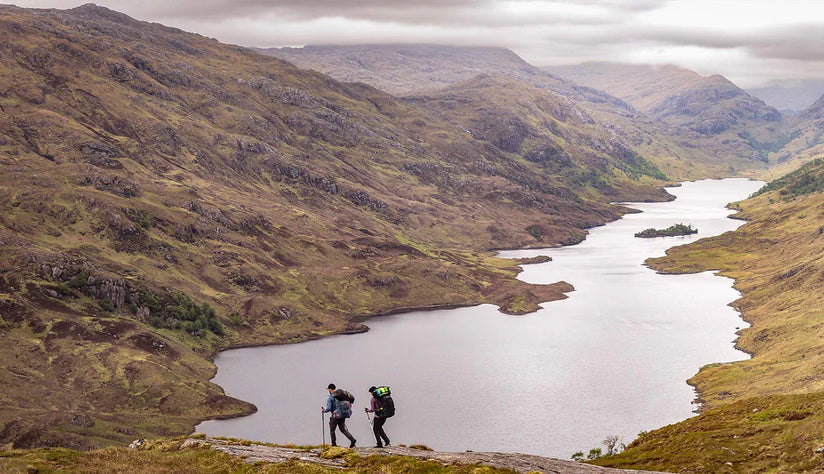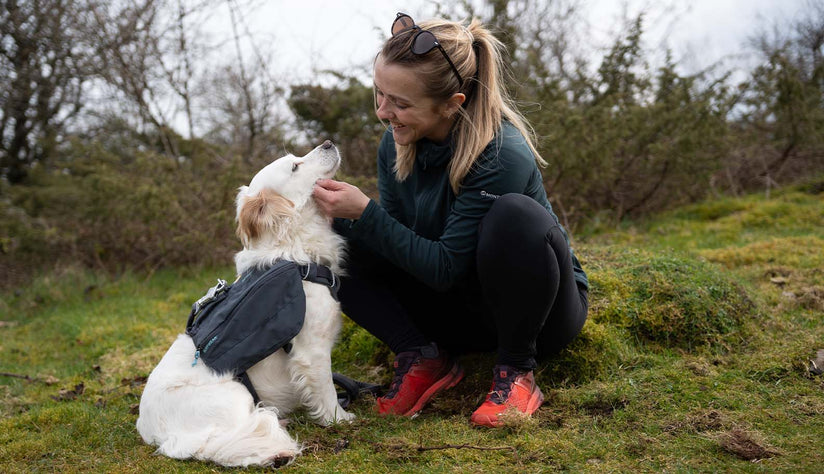Adventure film producers Summit Fever Media have captured the brutal action of the Montane Winter Spine Race for several years now. Having celebrated its 10th edition in 2022, they set about creating a special anniversary film to mark this momentous race milestone.
Officially premiering at Kendal Mountain Festival in November 2022, the 10th Anniversary film charts some of the incredible action captured over the years. The film can currently be rented online to view now, or for those seeking all the drama on the big screen, it will be taken on tour in the UK next month (get tickets for the first event in Sheffield here).
To help get you feeling suitably excited, we caught up with the director and co-founder of Summit Fever Ellie Green. Keep reading to learn more about the filming process, what you can expect from the 10th anniversary film and some of Ellie’s favourite participant stories over the years.
“Dragging my eyes open, I rummaged around in my sleeping bag for my phone. The shrill alarm cut through the night and my sleep. The icy wind and sleet was driving sideways across Cross Fell with mythical strength. It was still pitch black and dawn was a long way off. The unfamiliar horizons drifted in and out of the clag. Far off in the distance, we saw the familiar flickering of a head torch, before disappearing as the mist closed in. 4am. Day 3 of the Montane Spine Race. Time to work.” Ellie Green, Director and Co-Founder of Summit Fever Media

We set up Summit Fever Media 10 years ago. We (myself and co-founder/ director Matt Green) had just returned from crewing on an ultra in the Himalayas and that was our tipping point to leave regular employment and try to forge ahead with establishing our own creative content business. Since then, we’ve covered several brand campaigns with Montane and other outdoor brands, we’ve shot short advertorials and features for Sidetracked Magazine, and produced award-winning documentaries on FKTs, the Barkley Marathons, UTMB and, most recently, Jenny Tough’s Solo.

Where the Winter Spine film began
Back in 2012, Matt spotted a small ad in Trail Running Magazine, where the race directors were advertising for entrants for a winter race based in the north of England. It was called ‘The Spine Race’ and promised a 268-mile non-stop, unsupported footrace in the midst of winter. Madness.
After asking around our network of runners, the common response was: ‘That’s impossible’, ‘It can’t be done’, ‘Too risky’. With our curiosity piqued, within a few hours Matt had emailed the race directors and offered up our services, initially for photography, but over the years this soon morphed into creating daily highlight films.
The brief for the Montane Spine was quite simply to tell the stories of the competitors and the race. It became clear early on that not only was the race exceptional, but those signing up to run it were even more so. The stories that emerged from the competitors deserved books and documentaries in their own right. These stories came right the way through the pack, from front to back. Ultimately, we were tasked with revealing the realities of the Spine race experience.
As the race gained more recognition and dot-watching threw the race out live into the mainstream world, our job became a way of filling in the blanks between the dots. Inevitably, ultra running is a lonely game and being a spectator on a multi-day ultra event is even more lonely. So we created a potted version of a day in the lives of the Spine runners, picking out stories of compassion, resilience, drama, and camaraderie.

The lure of the Winter Spine Race
The initial skepticism and divisive opinions surrounding the race (and its feasibility) was a draw. The outcomes weren’t conclusive. It wasn’t a neatly packaged-up trail race. It felt like an adventure, and in those early days in particular there was a tremendous feeling of being part of something exciting and unknown. There was an initial group of incredibly hardworking people who were all thrown together, putting everything they had into making this dream work.
Initially, our main overriding feeling was the excitement of the unknown. It was like nothing we had come across before. We were fairly new to this world of extreme ultra running and we bounded into it with insane levels of enthusiasm. This probably explained the shell-shocked feeling of emerging out of it from the other side the first few times!
I actually grew up around the northern Pennines, so I had a good idea of what the weather could be like. But even then I underestimated quite how brutal those winters can be. Whilst it doesn't have the arctic temperatures or vertiginous crags of more Alpine countries, it has its own set of uniquely challenging features. Persistent battering from the wind and the rain. Relentlessly boggy ground. Not to mention dampness that seeps through to your core and which utterly wears your spirit, and eventually your endurance, down.

Challenges along the way
The whole experience was a bit of a baptism of fire. We learned so much and definitely the hard way. I remember the first year of filming the main workhorse camera just gave up. It was totally and utterly kaput, leaving us with just one camera and one GoPro for the next 4 days. I just prodded at it uselessly, feeling the urge to kick it far over the edge into High Cup Nick.
Batteries we soon learned had to be tucked well inside a synthetic insulated jacket, close to the body. This is so that they could be kept warm and dry on the move. We soon discovered never to try to change memory cards when out on the hill. We also had a crash course in becoming super organised.
Ultimately, the Montane Winter Spine Race is just a difficult event to film. You sleep very little, your adrenaline is on high alert at all times, you’re chasing your tail looking for runners in black spots or high-tailing stories along the moors. Alternatively, you’re missing stories (even worse as every camera op will know!) and then there is the logistics of the job - getting stuck in snow drifts or floods, the endless driving at night and, at some points, the loneliness of it.

Satoshi’s Story
I always come back to this story. We were parked near Padon Hill, which for some reason tends to be a hot spot of drama. We knew there were a couple of runners on their way. By now we had a good idea of how long certain stretches take the runners and where the black spots are so we had calculated at what time we would have to get out the car and head out to meet them.
About a couple of kms in and we hadn’t seen anyone. A little bit strange but not that unusual. It transpired that one of the runners had started to suffer from hypothermia symptoms and the nearest runner to him, Satoshi, had stopped to give him support, comfort and to take care of him whilst summoning the safety teams and medics. Satoshi was with this runner for about two hours. At this point in the race, Satoshi was towards the back of the pack and we left him as he readied himself to head off to the next checkpoint with the other competitor in the safe hands of the rescue team. The race directors had given him a two-hour extension for his efforts and, although he made the cutoffs, he didn’t finish the race.
We caught up with Satoshi as he was crossing the Cheviots late at night. He was dragging one foot behind him and one strap of his rucksack was slowly slipping down his shoulder, but he was still positive. From speaking to others far more experienced than us, losing those two hours were crucial in terms of daylight and, the darker it got, the slower Satoshi became until he eventually had to retire. But I remember him saying that he knew that any other competitor would have done the same for him, and that to him was the point of this race, to help each other out, whether that means you finish the race or not.

Jasmin Paris’s Story
I don’t think anyone could mention the history of the Spine and not mention Jasmin. Her race in 2019 was exceptional and an incredible athletic achievement in its own right. She absolutely smashed that record and she was also racing previous Spine winners that year. Her win, I think, was a benchmark (an overused term I know!) moment for women in ultra running and sport.
The night that Jasmin Paris took the lead, we were just about to bed down for a few hours when a message pinged in - Jasmin has taken the lead, drop everything. This story was the priority and we didn’t need to be told twice. Our hearts were pounding and our nerves were fraying as we dashed off onto Blenkinsopp Common to film her progress.
She became a role model and inspiration for women around the world. It made me feel incredibly privileged and emotional filming her on that finish line as she stood there with her medal and her daughter facing a wall of cameras and cheering people. Listening to and following her story felt like a breath of fresh air, a defiant nod to those who still doubt the potential of women.

The Spine Race’s enduring legacy
The Montane Winter Spine Race is in a league of its own when it comes to ultra running. It feels like a hybrid beast of race, expedition and survival for those who take part. It is an often referred-to element of this race but the camaraderie that you encounter is second to none. You feel an immense sense of teamwork and purpose when you work on the Spine. You all look out for each other and work hard. The hours are long, the weather is pretty miserable, but you are all banded together in a team with a very simple purpose and you form tight-knit friendships and bonds that last a lifetime.
There’s a very loyal Spine fan base out there and we want to make sure that we’ve done them proud - otherwise we’ll never hear the end of it! It’s a daunting prospect delving into 10 years worth of footage. There are so many stories that it just isn't possible to cover them all, but we’ve picked out ones that stood out in our memories. There are so many stories that had us laughing uncontrollably and those that brought tears to our eyes. I hope people watch it and laugh, cry, feel inspired and, above all, appreciate the warmth and dryness of wherever they are watching it from.

Feeling inspired?
Ellie Green provided the above thoughts based on her experience filming the Montane Winter Spine Race over 10 years as part of the Summit Fever Media team. For your chance to see the action come to life, you can rent the film online here. Alternatively, you can watch a screening as part of the official UK film tour next month (tickets for the first event in Sheffield can be bought here).
For those eager to keep up with this year’s Spine race action, head over to our Winter Spine Race event hub to find out more about the various races, as well as access to the dot-watching pages. You can also discover more about the origins of this race in our inspiring story behind.


















